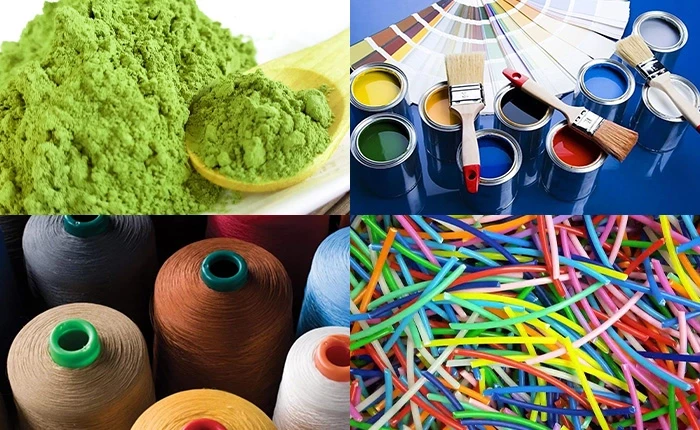Exploring the World of Indigo Dyes and Their Unique Products
The Allure of Indigo Dyes A Deep Dive into Nature’s Enchantment
Indigo, a dye that has been cherished for millennia, carries with it a rich tapestry of history, culture, and artistry. It is derived from the leaves of the indigo plant, which includes species like Indigofera tinctoria. Known for its deep blue hue, indigo has been utilized for textile dyeing, art, and even medicine across various civilizations. This article explores the significance of indigo dyes, their production process, and their place in contemporary fashion and sustainable practices.
Historical Significance
Indigo dyeing dates back to ancient civilizations, with evidence of its use found in places like Egypt, India, and Africa. It was often reserved for royalty and the elite due to the labor-intensive nature of its production. The process involves fermenting the leaves to extract the dye, which is then reduced into a soluble form. This complex procedure often brought together communities, with families and artisans collaborating to create vibrant textiles.
In many cultures, indigo was more than just a color; it was a symbol of wealth, status, and identity. In West Africa, for example, indigo-dyed fabrics often represented cultural heritage. In Japan, the craft of shibori—a technique that involves folding, twisting, or bunching fabric and binding it—is a testament to the artistry and skill involved in indigo dyeing.
The Production Process
The journey of indigo from plant to dye requires meticulous care and traditional knowledge. First, the leaves of the indigo plant are harvested and then soaked in water. Over time, the leaves ferment, producing a pigment that is rich in indigo dye. This process not only requires the skill of experienced dyers but also an understanding of the specific conditions needed for fermentation, such as temperature and moisture.
Once the dye is ready, it can be applied to textiles in various ways, including hand-dyeing or using industrial methods for larger productions. Natural indigo dye yields beautiful, vibrant shades that can vary from deep midnight blue to lighter sky hues, depending on the fabric and dyeing technique used. The layers of dye create depth in color, leading to stunning visual art in textiles that can’t be replicated by synthetic dyes.
indigo dyes products

Environmental Impact and Sustainability
As the fashion industry grapples with its ecological footprint, indigo dyeing represents a sustainable alternative to synthetic dyes. Historically, synthetic dyes have significant environmental implications, involving toxic chemicals and excessive water consumption. In contrast, natural indigo is biodegradable and less harmful to the surrounding environment.
Moreover, many contemporary brands are rediscovering traditional indigo dyeing methods to reduce their environmental impact. Innovative practices, such as organic farming of indigo plants and using natural mordants, are making a comeback. This trend aligns with a growing consumer preference for sustainable products, giving indigo dye a modern renaissance in ethical fashion.
Indigo in Contemporary Fashion
Today's fashion landscape has seen a resurgence of indigo dyes. Designers and brands are recognizing the unique qualities of indigo, not just as a dye but as a cultural heritage that reflects craftsmanship and history. Denim, often associated with indigo, continues to dominate fashion trends. The traditional dyeing techniques that produce different shades of blue add a unique character to each piece, ensuring that no two items are exactly alike.
In addition, collaborations with artisans from traditional indigo-producing regions bring authenticity and a story to modern clothing. This fusion of old and new appeals to consumers who seek individuality in their fashion choices while also valuing sustainability.
Conclusion
Indigo dyes embody a profound connection between nature, culture, and creativity. As we navigate the complexities of modern fashion and environmental challenges, the resurgence of indigo dyeing practices offers a glimpse into a more sustainable future. By embracing this ancient art form, we not only celebrate the beauty of indigo but also honor the craftsmanship and heritage of those who have passed down this knowledge through generations. Whether as a fabric, an art medium, or a symbol of sustainability, indigo remains a vibrant thread in the tapestry of human expression.
-
Sulphur Black Dyes in Daily Use
NewsMay.07,2025
-
Indigo Dyeing for Daily Life
NewsMay.07,2025
-
Indigo Dye Production and Its Growing Demand
NewsMay.07,2025
-
Color That Lasts
NewsMay.07,2025
-
Bromo Indigo for Modern Use
NewsMay.07,2025
-
Blue From Nature
NewsMay.07,2025
-
The Timeless Color in Fashion and Textiles
NewsApr.10,2025

Sulphur Black
1.Name: sulphur black; Sulfur Black; Sulphur Black 1;
2.Structure formula:
3.Molecule formula: C6H4N2O5
4.CAS No.: 1326-82-5
5.HS code: 32041911
6.Product specification:Appearance:black phosphorus flakes; black liquid

Bromo Indigo; Vat Bromo-Indigo; C.I.Vat Blue 5
1.Name: Bromo indigo; Vat bromo-indigo; C.I.Vat blue 5;
2.Structure formula:
3.Molecule formula: C16H6Br4N2O2
4.CAS No.: 2475-31-2
5.HS code: 3204151000 6.Major usage and instruction: Be mainly used to dye cotton fabrics.

Indigo Blue Vat Blue
1.Name: indigo blue,vat blue 1,
2.Structure formula:
3.Molecule formula: C16H10N2O2
4.. CAS No.: 482-89-3
5.Molecule weight: 262.62
6.HS code: 3204151000
7.Major usage and instruction: Be mainly used to dye cotton fabrics.

